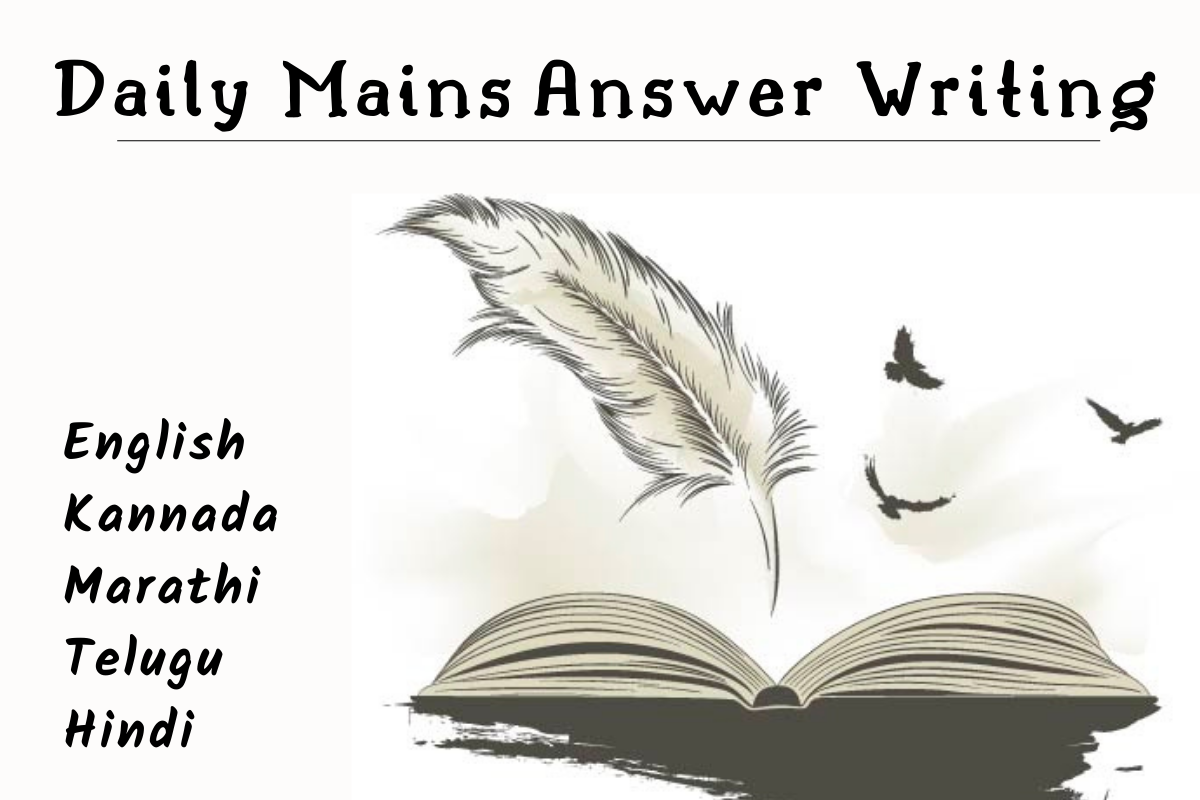24 Oct 2022 Daily Quiz
22 Oct 2022 Daily Quiz
21 OCT 2002 Daily Quiz
20 OCT 2022 Daily Quiz
19 Oct 2022 Daily Quiz
19 Oct 2022 -Mains Answer Writing
19 OCTOBER 2022 – MAINS DAILY QUESTIONS & MODEL ANSWERS: Q1. What are the reasons of cereal inflation and what are the connected issues? Discuss. · Paper & Topic: GS II à Government Policies and Interventions related issues · Model Answers: · What is the current state of affairs? · The rate of retail inflation peaked in September at 7.41%. Information on the rate of retail inflation is provided by the consumer price index. · It should be emphasised that food costs account for 45.86% of the CPI. The cost of items such as cereals, pulses, fruits, vegetables, milk, eggs, meat, and fish are all taken into consideration by the CPI. · Causes: · The discussion has so far focused on helping farmers increase the amount of crops they grow outside rice, wheat, and sugarcane while also making it easier for the poor to get access to nourishing meals that are high in protein, vitamins, fibre, and minerals in addition to carbohydrates. · The primary priorities of policymakers are market-based, resource-efficient, and ecologically conscientious agriculture. · These possibilities for considerable change, however, have been delayed by the Russia-Ukraine War and the subsequent economic upheaval worldwide. · Concerns: · Food prices are growing even though the amount of wheat and rice in government godowns is at a five-year low. · The condition is astonishingly grain-depleted when contrasted to how full similar godowns were at the beginning of the year. · In 2021–2022, exports of wheat and rice reached a record 105.6 million tonnes, with a record 28.4 million tonnes passing through the PDS. · How do we go about it? · The administration’s options are constrained because the wheat sowing season has not yet started and the new harvest won’t be delivered to the mandis until March. · Wheat cannot be imported since even the least expensive Russian wheat costs 30 INR per kilogramme. The government may consider ordering 1-2 million tonnes of imports to replenish supplies for the general public and to carry out OMOs (open market operations) to control pricing, given that imports can only be made for legitimate government goals. · Ascending MSP at this time is not a sensible move. Additionally, no additional incentives are needed to convince Indian farmers to produce wheat. · Conclusion: · Last but not least, India profited from a plentiful supply of foodgrains in previous years and even in the first half of 2022. While the decision to extend the free grain programme has sparked inflationary pressure on the supply side, the disruption of the global supply chain and the worsening consequences of climate change may raise demand-side pressure. Q2. Discuss about some of the Gupta Empire’s accomplishments, mainly focusing on its thriving economy. · Paper & Topic: GS I àArt and Culture · Model Answer: · India has historically been the centre of the world’s civilizations. India’s social, economic, and cultural roots have changed as a result of regional expansion. Indian history began formally with the advent of the Aryans and the Indus Valley Civilization. These two eras are referred to as the pre-Vedic and Vedic ages, respectively. Hinduism began to take shape throughout the Vedic period. · The first known Indian story is found in the Rig Veda. The Indus Valley civilization created a highly successful economic system between 2800 and 1800 BC. Agriculture was practised, domesticated animals were bred, trade with Middle Eastern nations was conducted, and bronze, tin, and copper were used to make tools and weapons by the inhabitants of the Indus Valley. · Between the fourth and third century BCE, the Mauryan Empire ruled the majority of the Indian subcontinent. Tamil Sangam literature started to develop in the south in the third century BCE, while Prakrit and Pali literature evolved in the north. In the first century BCE, South India produced and sold wootz steel to other nations. Over the following 1,500 years, known as the Classical period, the Gupta Empire stood out among the numerous dynasties that dominated various regions of India. · The Gupta Empire had the following economic system: · The Gupta Empire placed a great importance on agriculture. · Because they placed a strong emphasis on agriculture, the Gupta economy thrived. · During the Gupta era, which saw the creation of a sophisticated agricultural system, the Gupta kings adopted scientific methods to boost agricultural production. · Even before the Gupta dynasty gained imperial hegemony, India had a highly advanced agricultural, industrial, and commercial system. During this time, the economy was stable and prosperous, which allowed for a significant rise in culture. · Trade took place on the ground and close to the coast. India had commercial ties with both eastern and western nations. · India frequently traded nautical contacts with other countries like Sri Lanka, Persia, Arabia, the Byzantine Empire, Africa, and others. · Conclusion: · It is well known that the Gupta era was the golden age of North Indian art. The majority of the surviving works are religious sculptures, despite the fact that painting was undoubtedly more common. The Jain Tirthankara figures, the well-known carved stone god, and the Buddha image all made their appearances in Hindu art during this time; the latter was frequently created in extraordinarily large sizes.


